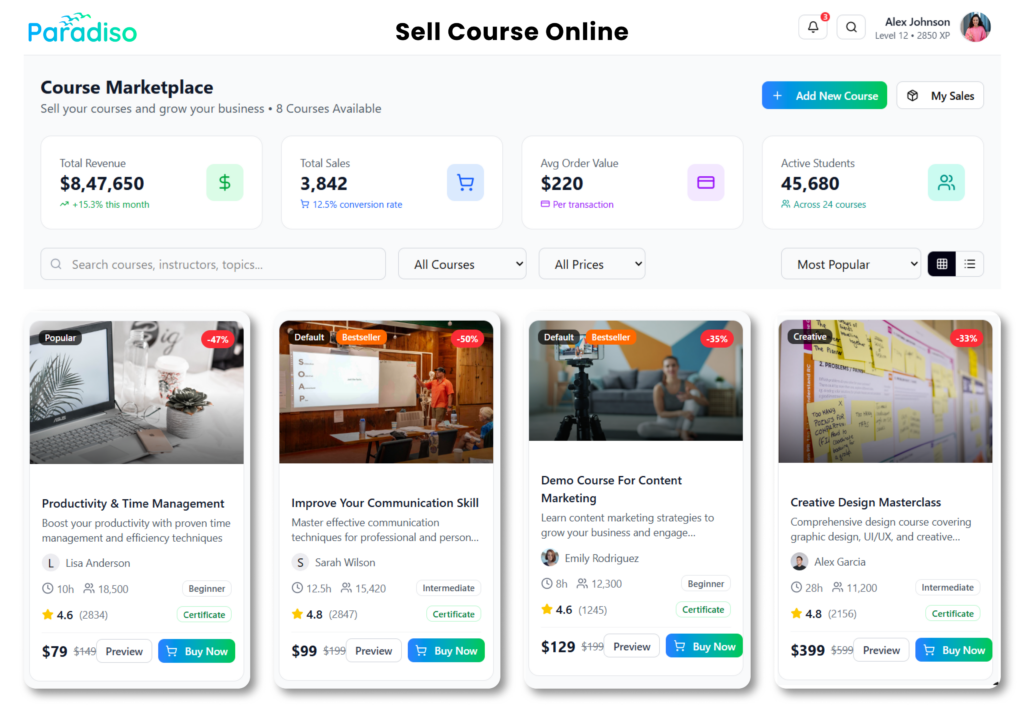Education has significantly changed in recent years, with technology playing an increasingly important role in the classroom. One such technological innovation that has revolutionized education is the Learning Management System (LMS). An LMS is a software application that enables the management and delivery of e-learning content and activities. It is designed to provide a centralized platform for educators to deliver educational content, track student progress, and facilitate communication between students and instructors.
Integrating an LMS in educational institutions has transformed how students learn, and instructors teach. It offers many benefits, including flexibility, convenience, and personalized learning. However, when selecting an LMS for language teaching, several factors exist, such as the platform’s features, ease of use, scalability, and cost. Let’s explore how you can choose the best LMS for a language school to maximize your learning potential.
Choosing the Right LMS for Your Language School
Choosing the right Learning Management System (LMS) is crucial for language schools to provide students with a high-quality learning experience. However, with so many LMS options available in the market, it can be overwhelming for language schools to choose the right one. Therefore, it is essential to research and evaluates different LMS options to select the one that best suits the school’s needs and budget.
Why you Should Research Different LMS Options
Researching different LMS options is essential because it enables language schools to make informed decisions about the software they choose to integrate into their curriculum. With the right LMS, language schools can streamline their operations, improve outcomes, and enhance the student experience. When researching different LMS options, it is essential to consider factors such as ease of use, scalability, features, technical support, and cost.
4 Tips to Choose the Best LMS For Your Multilingual Online Training Course
When choosing an LMS for a language school, several questions should be considered: Does the LMS provide a user-friendly interface that is easy to navigate for students and instructors? Can the LMS be scalable and accommodate the school’s future growth? What features does the LMS offer, and are they aligned with the school’s curriculum? Is the LMS provider reliable and responsive to technical support inquiries? What is the cost of the LMS, and is it within the school’s budget? By answering these questions, language schools can select an LMS that meets their unique requirements and goals.
1. What Types of Learning Materials Can You Upload?
In a Learning Management System (LMS) for language schools, a wide range of learning materials can be uploaded. These materials can include text documents, presentations, images, audio files, videos, and interactive multimedia. Language schools can use an LMS to create and upload various course content such as course syllabus, lectures, quizzes, assignments, and assessments. Additionally, an LMS can support multiple file formats, enabling instructors to use different software and applications to create and upload learning materials.
2. Is the LMS Easy to Use?
Most modern LMS platforms for language schools are designed to be user-friendly and accessible, even for non-technical users. With features such as drag-and-drop functionality, easy-to-use grading systems, and interactive games and videos, younger students can engage and motivate them to learn. Additionally, parental controls allow parents to monitor their child’s progress and communicate with the teacher. Overall, an LMS for a language school should be designed to be easy to use and navigate to promote an enjoyable and successful learning experience.
3. Does the LMS Offer Automated Reports and Analytics?
Yes, LMS platforms offer automated reports and analytics that can provide valuable insights for language schools. By analyzing student performance, engagement levels, and completion rates, instructors can make informed decisions about teaching methodologies and personalize learning experiences. This data-driven approach enables schools to evaluate the effectiveness of their courses and improve student outcomes. Overall, the automated reports and analytics functionality in an LMS can enhance the learning experience and help language schools achieve their educational objectives.
4. Is the LMS Affordable, and Does it Offer a Free Trial?
Affordability is an important consideration when choosing an LMS for a language school. The cost of an LMS can vary significantly depending on the features and functionality it offers, as well as the number of users it can support. Additionally, many LMS platforms offer free trials that enable users to test the system’s features and functionality before committing to a purchase.
One such LMS platform that offers a free trial is Paradiso CourseCart. This cloud-based LMS is designed to provide a comprehensive solution for language schools, with features such as course management, assessment tools, and mobile learning support. In addition, the platform is affordable and scalable, with pricing plans that are tailored to meet the needs of schools of all sizes.












